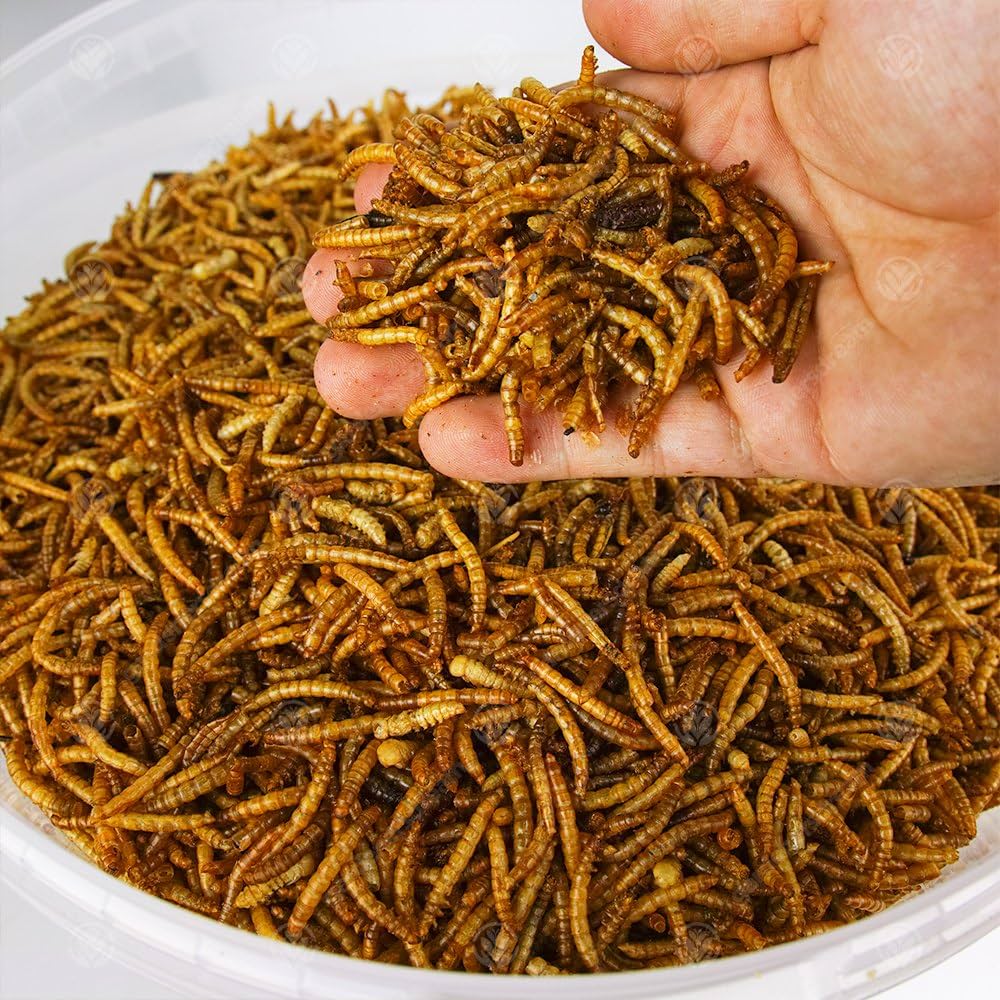Whether you’re a bird lover or just a backyard bird lover, the Eastern Bluebird is one of the most interesting birds to have around your home. For those who enjoy attracting birds to their yard with feeders, luring an Eastern Bluebird can be a real challenge, making watching them even more enjoyable. Bluebirds are omnivores that feed on a variety of insects, berries, earthworms, and snails, but they rarely eat nuts or birdseed, so it takes some planning to lure them to your yard. Mealworms are an affordable and easy-to-find option, but they can also be one of the mistakes you’re making when it comes to your feeders. Unfortunately, mealworms (like crickets) are not a good source of calcium—they’re basically bluebird candy. If your birds are fed mealworms regularly, they will not get enough calcium, which can lead to weak eggshells, brittle bones, and unhealthy chicks.
If you want generations of bluebirds to enjoy this tasty treat, it’s best to feed mealworms sparingly. Additionally, some mealworms are better to feed than others, especially during nesting season. Here’s why mealworms should only be given as an occasional treat, plus some tips for feeding mealworms safely without putting your bird’s health at risk.
To maintain healthy bones and eggshells, bluebirds must consume calcium and phosphorus in a 2:1 ratio. Mealworms contain some calcium, but they are extremely high in phosphorus, which can upset this delicate dietary balance. Since more calcium is stored in bones, adult bluebirds can afford to eat mealworms as a snack as long as they are getting enough nutrients from other food sources. However, adequate calcium intake is especially important for bluebirds during the breeding and nesting season. Calcium deficiency can lead to a condition called stuck eggs, in which the developing eggshell does not completely harden. Soft eggs can not only cause problems for young birds, but can also cause serious complications for the parent bird. Soft eggs can become stuck in the parent bird, leading to malnutrition, cracked eggs, infection, and even death.
If the eggs are developing properly, the chicks also need vital calcium from their food to maintain strong bones, so never place mealworms in or near the nest box. Mealworms have a hard exoskeleton that is usually not a problem for adult birds, but it is difficult for chicks to chew through and digest. Uneaten mealworms can attract ants, which can harm the chicks. Parents know best how to feed their chicks, so let them decide when their growing chicks can eat mealworms.
If you have bluebirds in your yard, should you put out feeders during the summer? A few mealworms a day will be fine during the breeding season in the spring and early summer, but you will need to encourage the parent birds to seek out more nutritious foods for themselves and their young. Plant native berry plants like viburnum, or feed sunflower seeds, safflower, and green caterpillars. To be safe, it is best to wait until late summer to add mealworms when the young are mature and the mothers are less pregnant. Dried mealworms have less nutritional value and are harder for young birds to digest. While live mealworms may be more expensive, they are better, and the sight of them squirming on a plate makes them more appealing. Be sure to place live mealworms in a covered container to keep them still.
Adding calcium can also make mealworms a healthier snack! Place mealworms in a plastic bag and add a ground calcium source, such as ground oyster shells, ground eggshells, or calcium carbonate powder, then gently shake the bag to coat the mealworms in calcium. Feeding mealworms this way ensures that the birds are getting extra calcium while enjoying their treats. In addition to offering these tasty treats, you can also explore other ways to attract bluebirds to your yard, such as providing nesting boxes, perches, and water sources.
Post time: Jun-23-2025

